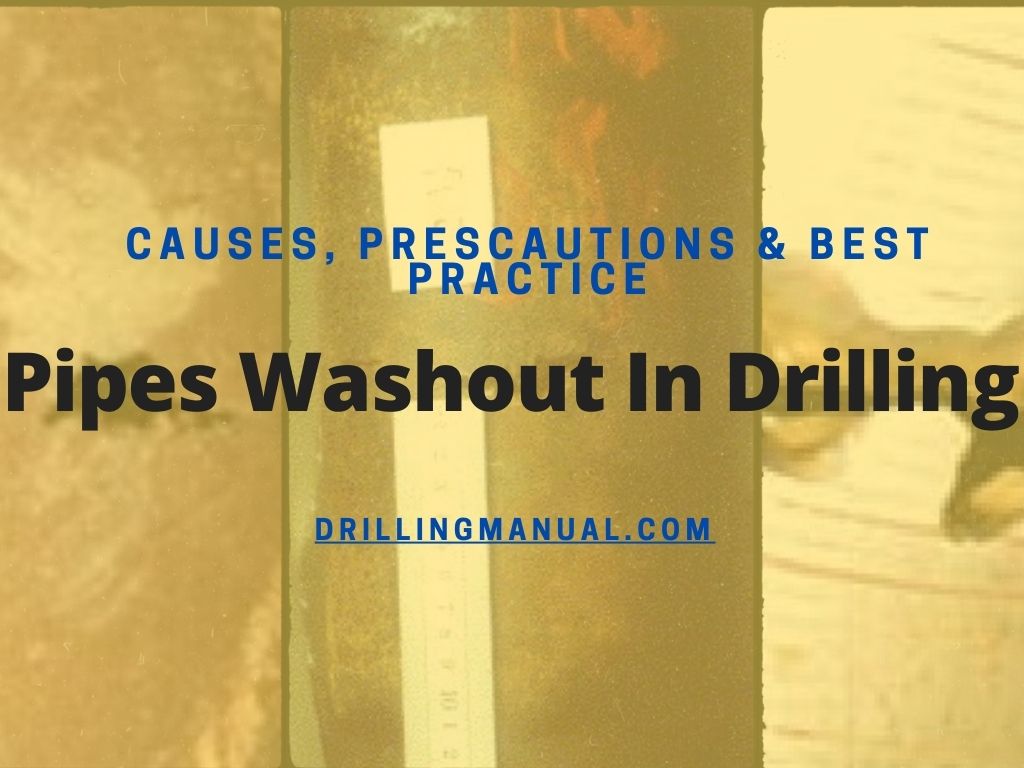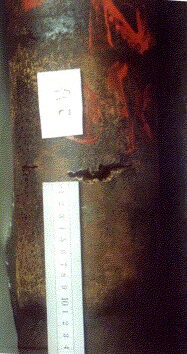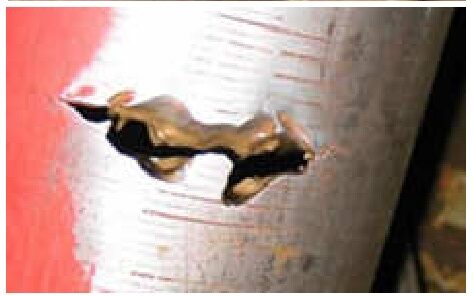Pipe Washout in oil and gas is a sudden problem that may happen during any stage of drilling the well and may cause a parting of the string and the following fishing in drilling operations that will increase well time and cost.

Drill Pipe Washouts Causes & Precautions
As with all downhole problems, prevention is better than cure. The best way to prevent pipe washouts is to handle all tubulars correctly:


- All threads and seal faces are to be inspected before make-up.
- Correctly clean and dope (Thread Compound) all tool joints for drill pipes, drill collars, heavy-weight drill pipes, …. etc.
- Ensure the correct make-up torque is being applied.
- Always use protectors to prevent damage to threads and seal areas.
- Maintain good drilling practices to prevent all drill string vibrations.
- All tubulars are to be inspected to a standard (drill pipe inspection) and at a frequency commensurate with operating conditions and following business unit requirements and API RP7G.
Best Practice When Dealing With a Washout Includes:
- While washing to the bottom, check that the actual system pressure drop matches the calculated figure.
- Both the Driller and Data Engineer must be kept aware of any mud weight changes (Check also: Mud Balance Test Procedure) or work being done on the Circulation mud system, which may affect the system pressure loss. (Circulating a heavy slug downhole can closely mimic the pressure drop normally associated with pipe washout in drilling oil and gas.)
- The Driller and Data Engineer must stay alert and report any unexplained pressure fluctuations.
- Washouts in oil and gas will typically display a characteristic sudden pressure drop followed by a slower yet continual reduction in circulating pressure.
Washout is Suspected

If a washout while drilling is suspected, then the following action should be taken:
- Check that the pressure drop is not associated with a drop in the pump strokes.
- Pull the string off the bottom and stop circulating immediately.
- Have the surface system, e.g., rotary hose, drag chains, HP pipework, etc., checked for leaks and potential spills to sea.
- Stop rotating, but continue working the pipe.
- Check the drill string weight has not changed.
- If no leak is found, restart the mud pumps, but keep people clear of the floor while pulling the stand back up through the rotary.
- Derrickman to sound the pumps and check the pop-offs, etc.
- The driller is to change to a second pump or pump combination and double-check the pressures.
- Checking against previous SCR figures is unlikely to be of help as the circulating pressures involved are often too low to be of value.
- Well Site Leader to check the pressure chart and look for signs of characteristic pressure drops or indications that the pressure loss may be attributed to a bit nozzle clearing or a heavy slug being circulated the system.
- If an MWD tool is in the drill string, check to see if it is still pulsing OK (lack of a pulse could indicate a pipe washout has occurred above the tool).
- Is the system pressure fluctuating more than normal as the string is worked up and down? (Longitudinal crack washouts can open and close as the string, especially drill pipe, goes from tension into compression.)
- If unable to establish any problems with the surface equipment, then consider carrying out a pump test as detailed in section 3.2.2 below.
- If no pump test data is available, then close in the IBOP (or Standpipe valve if the IBOP is not designed to hold pressure from above). Then using the mud pump, pressure test the surface system to the previous circulating pressure.
Pipe Washout While Drilling is Confirmed
Once it has been established that the pressure loss & pipe washout is indeed downhole then the drilling Site Leader must decide whether to circulate clean or not. This decision can only be taken at the time and with the full understanding of hole conditions etc.
Normal practice would be to pull straight out without circulating, however, circumstances such as having Nuclear Sources sitting in the reservoir, may dictate otherwise. String rotation should be avoided with a washout in the string.
A better understanding of the position of the oil and gas washout may be established by using one of the techniques detailed below.
In order to allow for easier detection, do not pump a slug but make sure the rig floorhands are not at risk of being sprayed with mud when the wash arrives back at the surface. Also, floormen should inspect each tool joint (Check also: drill pipe tool joint) as it is broken and pay particular attention to the connection upsets and slip areas (Check also: slip crushing).
Action To Be Taken
Considerations when dealing with a pipe washout while drilling include:
- When trying to find a washout, it is often useful to pressure test the surface system against the IBOP or standpipe valve, as mentioned above. It is important, however, that the Rig Drilling Supervisor has witnessed this test in advance and understands the normal leak rate which can be expected when testing against mud pumps.
- A more accurate and potentially less damaging option to carrying out a static pressure test is to conduct a dynamic surface test through a fixed choke. The base line pressures can be checked while RIH, but should only be carried out while still inside the casing (Check also: Casing Specs Tables):
- Line up to have only one pump online.
- Close off the rotary hose and line up to circulate from the standpipe through the fully open fixed choke.
- Bring in the pump and establish what pump rate is achieved against a fixed pressure of 2000 psi.
- Test each pump in turn and record the pump rate achieved in each case.
- This test will need to be repeated when a new size of Liner is fitted or if a significant change is made to the mud weight.
- If deemed appropriate, then the Drilling Supervisor may try to find where the pipe washout is by using either of the below methods
- After POOH and if no sign of a washout can be found, then consideration should be given to tripping pipe back to bottom making and breaking each connection. If this again proves unsuccessful, then it may be necessary to pressure test the string in stages.
Methods to Determine the Position of Drill Pipe Washout
- If a water-based mud is in use, then a carbide bomb may be dropped and the resulting gas peak lagged (Check also: lag time in drilling) to show the depth of the washout.
- If there is no MWD in the bottom hole assembly (Check also: Types of BHA), then a Softline tell-tale may be used. Tie a large stopper knot in a 12″ length of Softline and then unravel the strands. Pump the Softline down the string and watch for a slight pressure rise as the string partially plugs the washout. The pump strokes at this point can then be used to calculate the position of the wash (additionally the Softline will make it easier to spot the wash while POOH).
Download Washout Calculations Sheet
Method 1:

- Pump material that can be easily detected
- Record the number of strokes till the detectors are seen on shale shakers
- Record the annulus & drill pipe capacities and pump output
- Calculate the depth of washout
Method 2:

- Pump plugging material to plug the washout.
- Count the number of pump strokes till pressure increases.
- Run the below calculations.